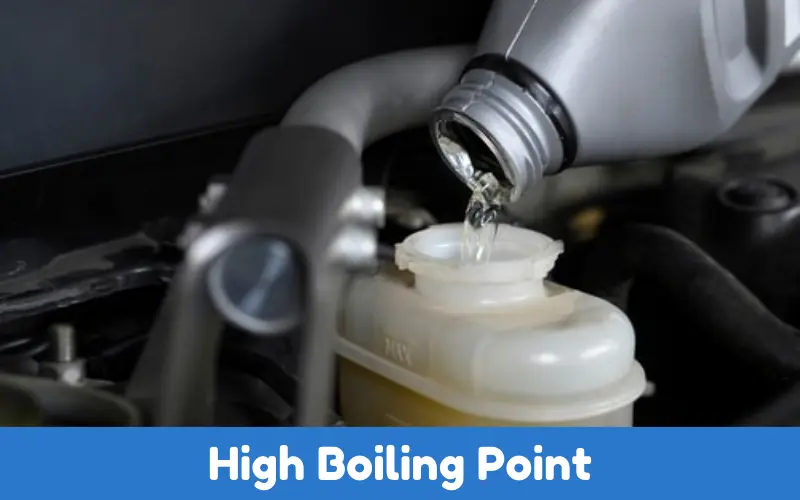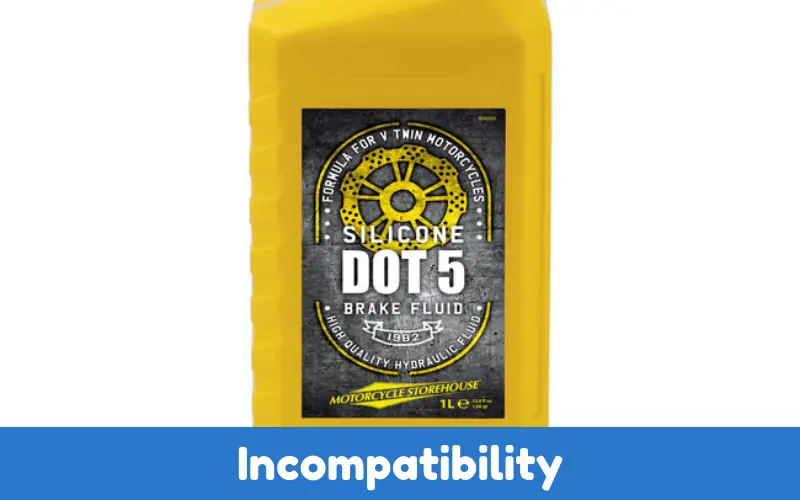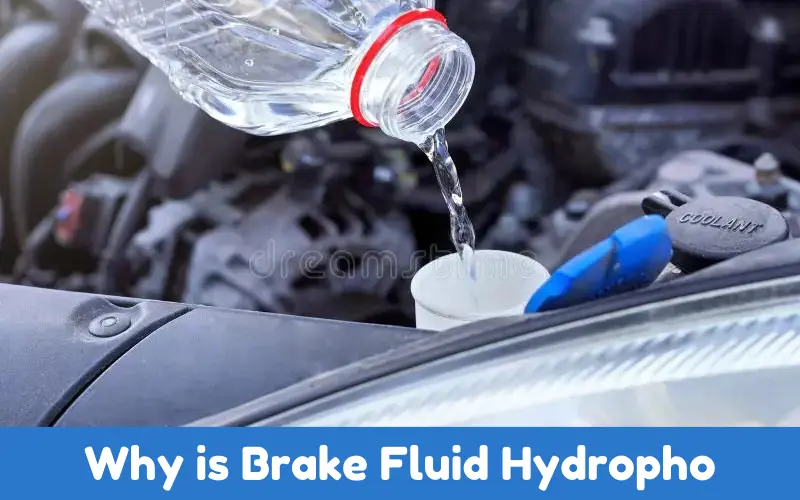Without brake fluid, the brakes on your vehicle would not function at all, stopping you in your tracks at the most critical moment.
Identifying and understanding the properties of brake fluid required for keeping your vehicle’s braking system in excellent working order addresses the prompt.
We encounter the term all the time in connection with brake fluid, why is brake fluid hydrophobic, and why is this property of brake fluid so important to the performance and safety of your car?
Topic Summary
What is Brake Fluid?
Brake fluid is a special kind of hydraulic fluid used specifically as a medium for transferring the force produced by the braking system to stop or slow down the velocity of your vehicle.
Before slowing down, your car sends a force to the brake calliper, which creates friction with the rotor via brake pads. These three components work together to generate kinetic energy and make the car stop.
The working of a car braking system is interesting, especially when you know that there are three types of brake fluid available in the market, including DOT 3, DOT 4, and DOT 5.
Another unusual aspect of brake fluid is that it is hydrophobic and resists water. Except that DOT 5 is not. It is, in fact, a silicone type of brake fluid. And it is definitely hydrophobic.
But in this respect, it is different from its hygroscopic cousins and has a different set of characteristics and considerations.
What Does Hydrophobic Brake Mean?
The word is formed from the two Greek roots’ hydro,’ meaning water, and ‘phobic,’ meaning fear, hatred, or aversion.
And hinting at the basis of the material property known as hydrophobicity (in chemistry, phobic generally means fear or aversion to). A hygroscopic substance which is one that somehow attracts and absorbs water.
Why is Brake Fluid Hydrophobic?
Some exceptional characteristics make brake fluid hydropho. They are:
1. Anti Corrosiveness
Due to the hydrophobic nature of brake fluid, water absorption is prevented. Suppose the brake fluid absorbs water, rust, and corrosion in parts such as the brake lines have issues.
Rust may be formed in the brake system filled with water. Because rust inhibits the movement of brakes, brake fluid should always be kept of good quality.
2. High Boiling Point
Brake fluid must maintain a high boiling point in order to do its job effectively under high temperatures. If brake fluid becomes contaminated with moisture, the boiling point will drop.

When the brake fluid boils from high temperatures, the vehicle may exhibit something known as brake fade or the braking system losing its pressure or effectiveness, which can cause brake failure and can be very dangerous.
3. Consistent Performance
Hydrophobic brake fluid keeps the braking system efficient by working consistently. Hydrophobic fluids don’t mix with water, so they don’t degrade over time.
When To Use Hydrophobic Brake Fluid?
While DOT 5 brake fluid sees some limited use, usually restricted to applications where the vehicle is infrequently used, or the braking system remains exposed to moisture for long periods of time. Such as with military vehicles, classic cars, and some motorcycles.
For the overwhelming majority of modern vehicles, especially those that are driven on a regular basis, glycol-based, hygroscopic brake fluids such as DOT 3, DOT 4 and DOT 5.1 are preferable because of their enhanced and safer performance in typical driving conditions.
The Advantages of Hydropho Brake Fluid
Water Resistance: DOT 5 brake fluid is hydrophobic, which means it doesn’t absorb moisture. This is good because if the vehicle is exposed to significant amounts of humidity or moisture, less water will get into the brake fluid.
Stable Boiling Point: With no water absorption, the boiling point of DOT 5 brake fluid does not shift over time, a key consideration in high-performance uses where consistency. Even under extreme conditions is critical.
Less Corrosion Risk: Because DOT 5 brake fluid is hydrophobic, it does not promote moisture Condensation Corrosion inside the braking system.
This can extend the life of components such as brake hoses, calipers, and cylinders, particularly vehicles that are in storage for extended periods.
The Drawbacks of Hydrophobic Brake Fluid
Although hydrophobic DOT 5 brake fluid can have several benefits, it isn’t feasible for every manufacturer to use:
Incompatibility: DOT 5 brake fluid is incompatible with fluid systems designed for DOT 3, DOT 4, or DOT 5.1 fluid. Mixing the fluids will damage your braking system and its components (seals and gaskets).

Compressibility: DOT 5 brake fluid is more compressible than glycol-based fluids, giving the brake pedal a spongy feel that is unwelcome in many conditions.
Air Entrainment: Silicone-based brake fluid is easier to contaminate with air bubbles that mimic moisture and generally form where any non hygroscopic fluid would.
Any air bubbles in your brake fluid will cause braking performance to become inconsistent and your brake pedal to feel spongy.
FAQS About Why is Brake Fluid Hydrophobic
What Does It Mean When Brake Fluid is Hydropho?
Hydropho brake fluid, such as DOT 5, does not absorb any water from the environment. Hygroscopic fluids (such as DOT 3, DOT 4, and DOT 5.1) do. Hydrophobic fluids repel water, meaning they are non hygroscopic. Therefore, you do not have to worry about isolating your brake system from absorbing water.
What Are the Benefits of Using Hydrophobic Brake Fluid?
The advantages of hydraulic brake fluid are that it is hydrophobic and resistant to absorbing water from the air so that it maintains a stable boiling point over time, and there is a lesser risk of corrosion in the braking system, especially if the car is stored for long periods or in high humidity environments.
Can I Mix DOT 5 Hydrophobic Brake Fluid with Other Brake Fluid?
DOT 5 brake fluid needs to be used by itself, meaning that you should not mix hydrophobic brake fluid with other fluids, such as DOT 3, DOT 4, DOT 5.1, and so on. Doing so will cause serious damage to your brake system and will result in compatibility issues, such as the seals getting damaged and the consistency of braking being affected.
What Are the Downsides of Hydrophobic Brake Fluid?
Yes, although brake fluid provides moisture resistance and corrosion protection, it also suffers a few inadequacies, such as greater compressibility, which means that the resultant braking action is much softer and feels ‘spongy’ at the pedal. Additionally, water absorption makes it more prone to picking up air bubbles, which are not very favorable to the efficiency of braking.
When Should I Consider Using Hydrophobic Brake Fluid?
Brake fluid’s specialized application means that it’s really something to be used only as an alternative for classic cars, military vehicles, or motorbikes that don’t see a lot of service and don’t get to sit for a long time in a moist garage or field. Check with your vehicle’s manufacturer’s advice.
Conclusion
The hydrophobic nature of brake fluid means it’s important for your car because it keeps moisture away so your brakes don’t start to corrode and keep the boiling point high and consistent.
Taking care of your brake fluid is an important step in caring for your braking system, and ultimately, that keeps you safe.

